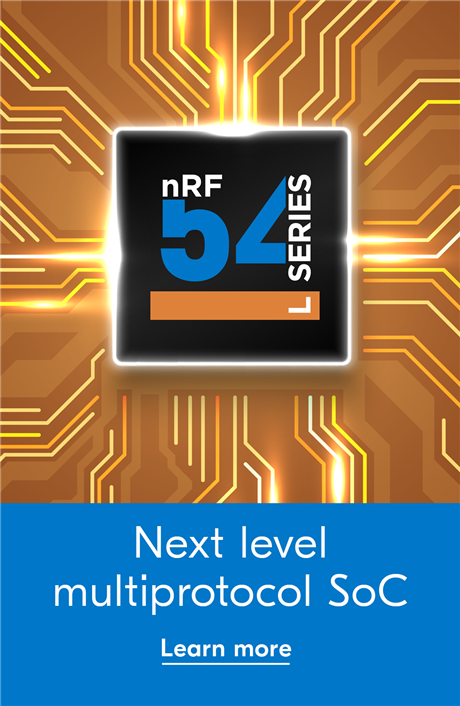The following is the estimated nRF51 current consumption during advertising with the DCDC disabled.
Advertising 1:
TX power: +4dBm
adv interval: 20ms (minimum advertising interval in normal adversising mode)
payload: 10 bytes
application processing: 2ms each adv interval.
Average current consumption: 1794 uA
Advertising 2:
TX power: +4dBm
adv interval: 1200ms
payload: 10 bytes
application processing: 2ms each adv interval.
Average current consumption: 33,4 uA
Advertising 3:
TX power: +4dBm
adv interval: 1200ms
payload: 10 bytes
application processing: 0ms each adv interval.
Average current consumption: 25,7 uA
Advertising 4:
TX power: -20dBm
adv interval: 1200ms
payload: 10 bytes
application processing: 0ms each adv interval.
Average current consumption: 19,6 uA
With nRF51 third revision hardware, DCDC reduces current consumption with up to 20% during advertising, see the nRF51822 PS 3.1 figure 11.
Central S120 single link connection (example 1):
Application processing 50 ms every 1 second: 235 uA
Transmitting and receiving packets 1 sec connection interval, RX 6 packets per interval, TX 6 packets per interval, 20 bytes per packet (includes base current +radio RX + radio TX + 16MHz crystal startup and run current + RTC + 32kHz crystal): 83 uA
Total: 318 uA
Central S120 single link connection (example 2):
Application processing 10 ms every 1 second: 67 uA
Transmitting and receiving packets 1 sec connection interval, RX 1 packet per interval, TX 1 packet per interval, 20 bytes per packet (includes base current +radio RX + radio TX + 16MHz crystal startup and run current + RTC + 32 kHz crystal): 22 uA
Total: 89 uA
S110 peripheral connection (example 1):
Connection interval: 1 second
Slave latency: 0
RX payload bytes in each packet: 0 bytes
TX payload bytes in each packet: 0 bytes
Number of packets to send in each connection interval: 1 packet
Number of packets to receive in each connection interval: 1 packet
Master clock 32kHz accuracy: 50ppm
Slave clock 32kHz accuracy: 20ppm
TX power: 0dBm
application processing: 0%
DCDC operation excluded
Current consumption nRF51: 14.8uA
S110 peripheral connection (example 2):
Connection interval: 0.040 seconds
Slave latency: 0
RX payload bytes in each packet: 0 bytes
TX payload bytes in each packet: 0 bytes
Number of packets to send in each connection interval: 1 packet
Number of packets to receive in each connection interval: 1 packet
Master clock 32kHz accuracy: 50ppm
Slave clock 32kHz accuracy: 20ppm
TX power: 0dBm
application processing: 0%
DCDC operation excluded
Current consumption nRF51: 255uA
S110 peripheral connection (example 3):
Connection interval: 1 second
Slave latency: 0
RX payload bytes in each packet: 0 bytes
TX payload bytes in each packet: 20 bytes
Number of packets to send in each connection interval: 1 packet
Number of packets to receive in each connection interval: 1 packet
Master clock 32kHz accuracy: 50ppm
Slave clock 32kHz accuracy: 20ppm
TX power: 0dBm
application processing: 0%
DCDC operation excluded
Current consumption nRF51: 17.5uA
S110 peripheral connection (example 4):
Connection interval: 1 second
Slave latency: 0
RX payload bytes in each packet: 0 bytes
TX payload bytes in each packet: 20 bytes
Number of packets to send in each connection interval: 4 packet
Number of packets to receive in each connection interval: 1 packet
Master clock 32kHz accuracy: 50ppm
Slave clock 32kHz accuracy: 20ppm
TX power: 0dBm
application processing: 0%
DCDC operation excluded
Current consumption nRF51: 42.2uA
S110 peripheral connection (example 5):
Connection interval: 0.040 seconds
Slave latency: 0
RX payload bytes in each packet: 0 bytes
TX payload bytes in each packet: 20 bytes
Number of packets to send in each connection interval: 4 packet
Number of packets to receive in each connection interval: 1 packet
Master clock 32kHz accuracy: 50ppm
Slave clock 32kHz accuracy: 20ppm
TX power: 0dBm
application processing: 0%
DCDC operation excluded
Current consumption nRF51: 941uA
S110 peripheral connection (example 6):
Connection interval: 0.5 seconds
Slave latency: 0
RX payload bytes in each packet: 0 bytes
TX payload bytes in each packet: 16 bytes
Number of packets to send in each connection interval: 1 packet
Number of packets to receive in each connection interval: 1 packet
Master clock 32kHz accuracy: 50ppm
Slave clock 32kHz accuracy: 20ppm
TX power: 0dBm
application processing: 0%
DCDC operation excluded
Current consumption nRF51: 29.4uA
S110 peripheral connection (example 7):
Connection interval: 4 seconds
Slave latency: 0
RX payload bytes in each packet: 0 bytes
TX payload bytes in each packet: 16 bytes
Number of packets to send in each connection interval: 1 packet
Number of packets to receive in each connection interval: 1 packet
Master clock 32kHz accuracy: 50ppm
Slave clock 32kHz accuracy: 20ppm
TX power: 0dBm
application processing: 0%
DCDC operation excluded
Current consumption nRF51: 7.8uA
- DCDC operation is excluded in all connection examples. With nRF51 third revision hardware, DCDC reduces current consumption with up to 20% during radio activity, see the nRF51822 PS 3.1 figure 11.
- If using internal 32kHz RC with temperature calibration instead instead of crystal: add ~2 uA.
- If using internal 32kHz RC without temperature calibration instead instead of crystal: add ~10 uA.




-

Stefan Birnir Sverrisson
-
Cancel
-
Vote Up
0
Vote Down
-
-
Sign in to reply
-
More
-
Cancel
Comment-

Stefan Birnir Sverrisson
-
Cancel
-
Vote Up
0
Vote Down
-
-
Sign in to reply
-
More
-
Cancel
Children